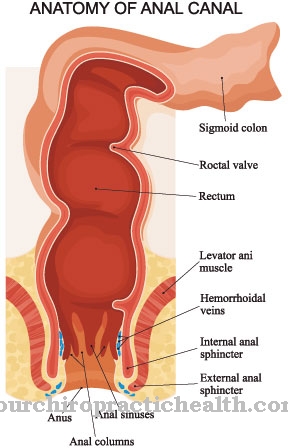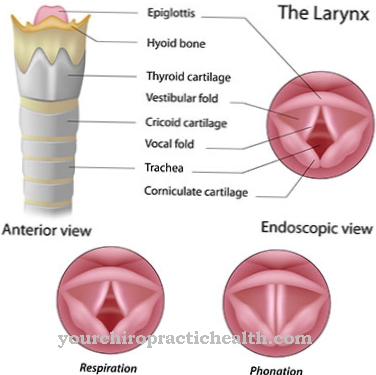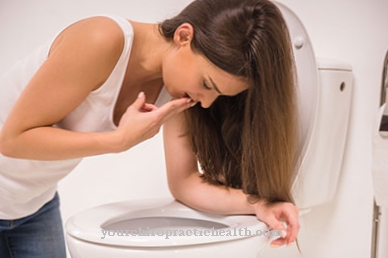The skin as a very complex and under certain conditions extremely sensitive organ can become ill even in children, making it a so-called Prurigo simplex acuta comes. Prurigo simplex acuta occurs predominantly in children from the 2nd to the 10th year of life.
What is prurigo simplex acuta?

© GraphicsRF - stock.adobe.com
Behind the Prurigo simplex acuta A disease of the skin spreads itself, which has very different causes. In contrast to other skin diseases, prurigo simplex acuta does not trigger any general symptoms.
Acute prurigo simplex progresses in phases, during which both the skin and the well-being of the affected children deteriorate. In medicine, prurigo simplex acuta is also classified under the synonym Strophulus infantum and is primarily based on an exanthem.
causes
Finding the cause of Prurigo simplex acuta has not progressed too far, so that the actual triggers for prurigo simplex acuta have not yet been clearly clarified.
In connection with the development of prurigo simplex acuta, it is assumed that external factors are responsible. In the case of the skin disease prurigo simplex acuta, these are based on pollen or dust particles or can be used as defense reactions of the body against insect bites.
In this regard, prurigo simplex acuta has a so-called atypical disposition of the sick child. Not only children, but also adults who already suffer from an asthmatic or exzematous disease, often have a tendency to prurigo simplex acuta.
Other possible causes for prurigo simplex acuta are mental overload, various metabolic diseases, chronic lymphatic leukemia, Hodgkin's disease or other previous illnesses. Pregnant women can also suffer from acute prurigo simplex.
Symptoms, ailments & signs
Prurigo simplex acuta is a form of prurigo that only affects children, usually between the ages of two and years. It is characterized by the sudden formation of papules on the skin, causing unbearable itching. General symptoms are not observed. The skin changes usually occur in summer and autumn and usually heal within a few days or weeks without scarring.
However, recurrences can often occur. The cause is suspected to be allergic reactions associated with parasite infestation, skin infections or digestive disorders. Therefore prurigo simplex acuta can also occur together with intestinal problems.
The papules arise especially on the trunk and extremities extension sides. The extreme itching causes the children to scratch open the papules. There is bleeding everywhere. However, this will stop the extreme itching. The actual disease is harmless and will heal itself. But due to the scratching of the skin lesions, secondary staph infections can occur.
This creates numerous pustules that are covered with yellow bark. Nevertheless, acute prurigo simplex does not tend to develop eczema. The skin changes heal without leaving any marks or scars. But there is always the risk of another attack. However, the older the children get, the milder the attacks are. From the age of eight the skin eruptions stop completely.
Diagnosis & course
During the course of the Prurigo simplex acuta it is assumed that the symptoms that occur are very similar to an allergy. Patients with prurigo simplex acuta complain of skin irritation, which occurs primarily on the upper and lower extremities as well as on the trunk and back.
Typical changes in the skin in prurigo simplex acuta are extensive redness, papules and either overpigmentation or "discoloration" of the affected areas, as well as almost unbearable itching. If the nodules present in prurigo simplex acuta are opened by scratching, the itching stops. In prurigo simplex acuta, a scab forms on the bloody papules. A consequence of prurigo simplex acuta is a blotchy appearance of the skin.
Complications
Due to prurigo simplex acuta, patients suffer from various ailments and diseases of the skin. These usually occur in early childhood. It is not uncommon for patients to suffer from bullying and teasing and can develop inferiority complexes or a reduced self-esteem as a result.
The permanent discomfort on the skin makes those affected feel uncomfortable, although it is not uncommon for them to feel ashamed. As a rule, prurigo simplex acuta leads to marked reddening of the skin and the formation of papules. A rash can also develop, which is often associated with itching.
Small blisters also appear on the skin. Constant scratching injures the skin, which can also lead to the formation of scars. The quality of life of the person affected is considerably reduced and restricted by prurigo simplex acuta. As a rule, treatment can be carried out with the help of medication.
There are no complications. However, in many cases those affected are also dependent on psychological treatment. Prurigo simplex acuta does not usually reduce life expectancy.
When should you go to the doctor?
Prurigo simplex acuta should always be examined and treated by a doctor. Otherwise severe complications can occur that can significantly reduce the quality of life of the person affected. Early diagnosis and treatment always have a positive effect on the further course of the disease. The doctor should be consulted if the patient suffers from the formation of papules with severe itching that occur for no particular reason. Digestive disorders can also occur.
In some cases, the disease can also lead to the formation of pustules. The symptoms of the disease can appear in episodes and then go away on their own. However, a visit to a doctor is very useful even after the symptoms have completely disappeared. Primarily, prurigo simplex acuta can be diagnosed and treated by a general practitioner or a pediatrician.
Treatment & Therapy
Based on the visual assessment of those affected and their description, the Prurigo simplex acuta first make a clear diagnosis. A differential diagnosis should exclude scabies (scabies), dermatitis or neurodermatitis.
If the findings of acute prurigo simplex are clear, treatment is carried out on several sides. This is based first of all on the therapy of a previous illness that could be a trigger, which is carried out in combination with psychosomatic support for prurigo simplex acuta.
In addition to the topical application of ointments and creams with glucocorticoids, the measures of therapy for prurigo simplex acuta also include antipruriginous drugs against the annoying itching. If these procedures do not achieve any positive effects in acute prurigo simplex, so-called tetracyclines and antimycotics are administered.
In addition, antidepressants (effective against depressive episodes) or antihistamines (used in allergies) can be prescribed for the drug treatment of prurigo simplex acuta. Neuroleptic drugs have also proven effective against prurigo simplex acuta.
prevention
Patients who are affected by certain diseases or treatment measures (dialysis) that are the causal triggers for the Prurigo simplex acuta important, you should pay very close attention to the condition of your skin and consult a specialist in the event of initial or suspected symptoms of prurigo simplex acuta.
Small children should be protected from insect bites to avoid prurigo simplex acuta. If there are signs that hypersensitivity to specific allergenic substances is present, this should be clarified in order not to expose oneself unnecessarily to the causes of prurigo simplex acuta. Unfortunately, further preventive measures against prurigo simplex acuta are not yet known.
Aftercare
After successful treatment of prurigo simplex acuta, good follow-up treatment can be helpful to prevent the skin disease from recurring. The underlying diseases should be focused. In particular, diabetes mellitus, liver and / or hormone diseases increase the likelihood of prurigo simplex acuta and must therefore be recognized and treated to avoid a new outbreak of the disease.
For this purpose, examinations of the liver, sugar and hormone values in the blood should be carried out by the family doctor, which must be repeated at regular intervals as a check if one of the diseases mentioned is present. If the hormone levels are poor, therapy should also be provided by an endocrinologist. Depending on the underlying disease, drug therapy may be necessary.
If the liver values are bad, alcohol should be avoided and a liver-healthy diet should be followed. This primarily consists of avoiding products with animal innards such as kidneys, liver and black pudding. In the case of diabetes mellitus, a low-sugar diet may be indicated in addition to abstaining from alcohol.
In addition, particularly meticulous cleaning of the skin areas is recommended after prurigo simplex acuta. This is especially true if a bacterial infection of the skin could not be ruled out as the cause of the skin disease. Daily and thorough showering as well as regular hand disinfection, especially after staying in public toilets, are necessary for this.
You can do that yourself
Prurigo simplex acuta is a skin disease with extreme itching. Therefore, scratching the papules brings relief because the itching is immediately relieved at the scratched area. However, this will damage the skin and make the disease worse. Therefore scratching should be avoided or done in a way that is gentle on the skin. This is particularly difficult to do with this disease. Larger skin injuries when scratching can be avoided with short, filed fingernails without sharp edges. Scratch gloves can also help prevent major skin injuries.
Itching can also be relieved by cooling the itchy areas. The daily application of the cooling lotions prescribed for this disease is primarily used for this purpose. These lotions are part of the normal therapy for prurigo simplex acuta. Moist and cooling compresses are also helpful. Cold showers can also reduce itching. The living space should be kept at a low temperature. It is also important to wear airy and breathable clothing. This also applies to the bed linen. Sometimes ice and cooling elements that are placed on the skin also help. However, it is then necessary to protect the skin from frostbite.
Furthermore, the skin should not be washed with hot water. It is also important to avoid skin contact with skin-irritating substances such as solvents, cleaning agents containing alcohol and the use of certain detergents.

.jpg)


.jpg)

.jpg)


















.jpg)

.jpg)
